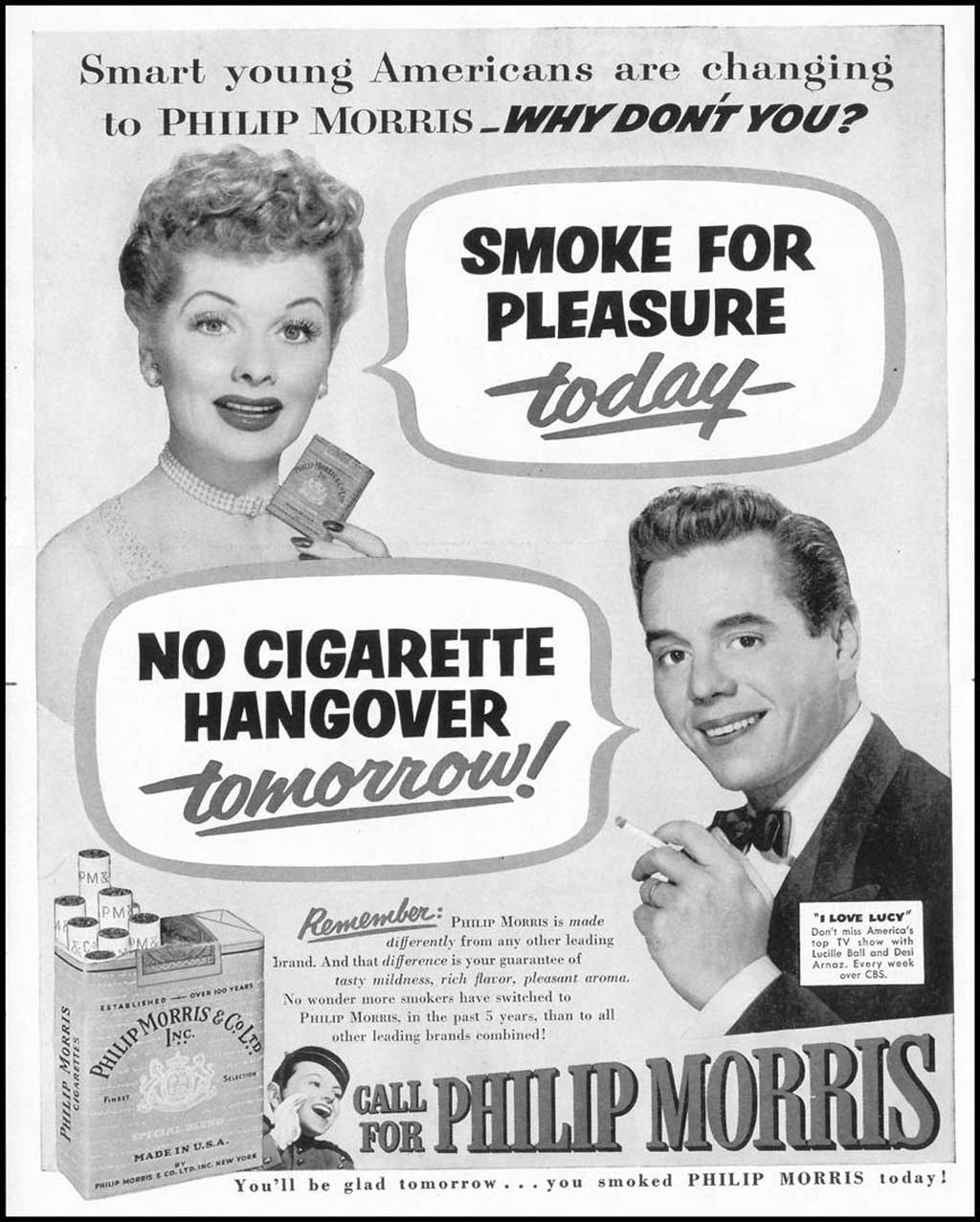By Eric Kohanik, ReMIND Magazine
Advertising has always had a role in movies and television. Sometimes, that role has been as a creative backdrop for storytelling. At other times, it is a not-so-subtle slap in the viewer’s face, thanks to celebrity endorsements, product placements and program sponsorships.
Whatever the case, advertising has had a long love affair with TV and movie screens. In the early days of television, advertising quickly became a major force, with sponsors often calling the shots when it came to which shows survived. And it didn’t take long for corporate names to adorn show titles, giving birth to such classics as the Gillette Cavalcade of Sports, Kraft Music Hall, Philco Television Playhouse and Texaco Star Theater.
Cigarette companies were among the first to latch onto TV and movie ads. And stars were quick to jump onto their bandwagon. During the heyday of I Love Lucy in the 1950s, it was common to see Lucille Ball and Desi Arnaz, as Lucy and Ricky Ricardo, peddling Philip Morris cigarettes in advertising skits on the show. Meanwhile, John Wayne became a regular pitchman for Camel cigarettes on TV and in theaters, proudly proclaiming in one ad that he had been smoking them for 20 years.
Ironically, Wayne would go on to be a spokesman for the flip side of the coin, too, doing commercials for Christmas Seals in the 1950s that outlined the battle against tuberculosis. Later on, Wayne would even do ads for the American Cancer Society, talking about his own battle with the disease that, he said, “cost me a piece of lung.”
Celebrity endorsements on TV have covered a wide spectrum through the years, ranging from Little House on the Prairie’s Michael Landon making a pitch for Kodak and Shirley Jones trumpeting Sunbeam appliances to Ed McMahon peddling Alpo dog food on The Tonight Show Starring Johnny Carson.
More recently, Robin Williams and Sarah Michelle Gellar played a father-daughter team heading up an ad agency called Lewis, Roberts + Roberts on The Crazy Ones. And, of course, there was the ultimate ad-agency setting: Mad Men, which built storylines around the characters who populated Sterling Cooper (later Sterling Cooper Draper Pryce and, later still, simply Sterling Cooper & Partners).
Overt sponsorships and endorsements are commonplace on TV now. There are shows clearly labeled as “paid programming” — infomercials that spend all of their time pitching a product. But there are also shows that blur the boundaries between legitimate programming and overt sales pitches.
That isn’t new, of course. Back in the 1950s, The Dinah Shore Chevy Show spent so much time boosting its sponsor’s product that even its theme song (“See the U.S.A. in your Chevrolet …”) did that. Meanwhile, in the 1960s, it wasn’t uncommon to see The Beverly Hillbillies‘ Cousin Jethro (Max Baer Jr.) or Uncle Jed (Buddy Ebsen) munching away on Kellogg’s Corn Flakes in commercials.
In fact, things eventually got so out of hand that the Federal Communications Commission ended up stepping in. During the 1970s, the FCC tightened rules on advertising in order to distinguish programming from advertising. In some cases, it even went so far as to require the use of program “bumpers” — announcements such as “We’ll be right back after these messages,” or “And now, we return to our regular programming” — in order to make the distinction clear.
Although the focus was aimed at protecting child audiences, the restrictions eventually spread further. Products such as cereal boxes or soda cans that appeared in TV shows were required to be generic in nature. Meanwhile, sponsor names were purged from show titles.
Much of that has fallen by the wayside again now. Today, when a character in a movie or TV shows picks up a product bearing a familiar logo, the manufacturer of that product has had to ante up to have it there.

